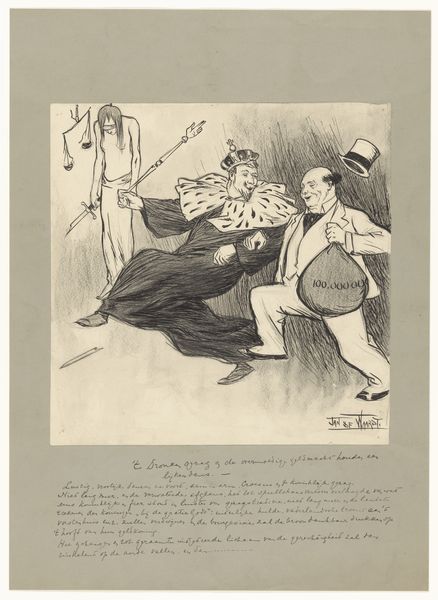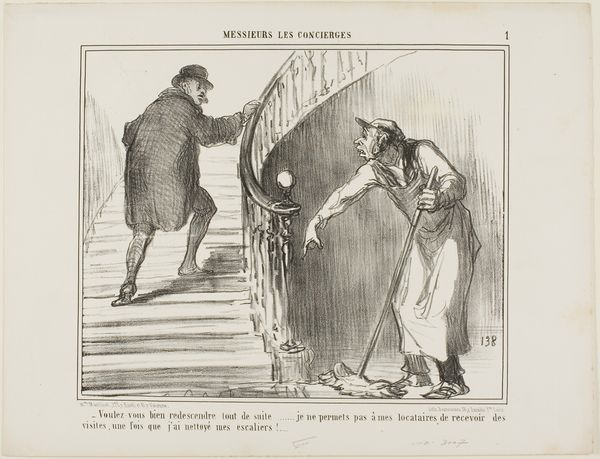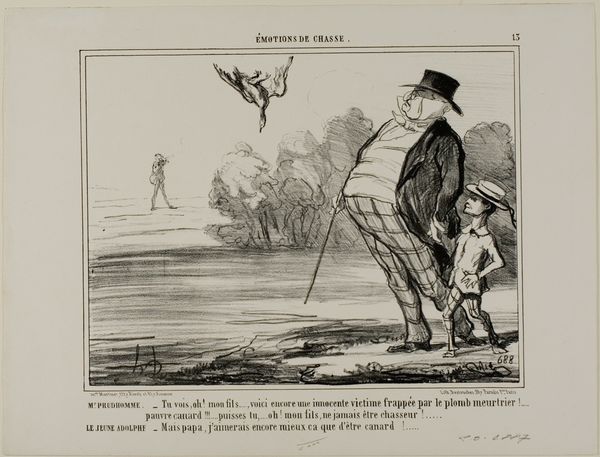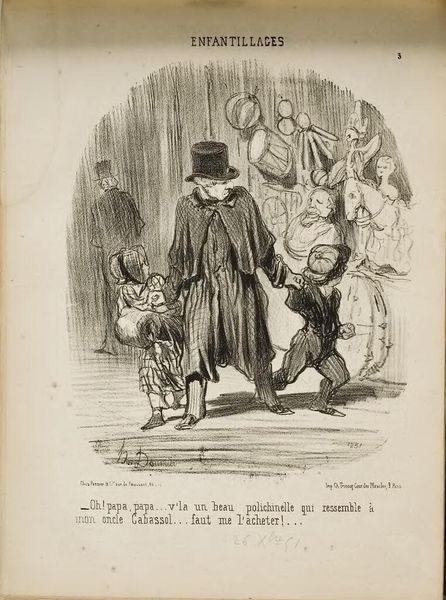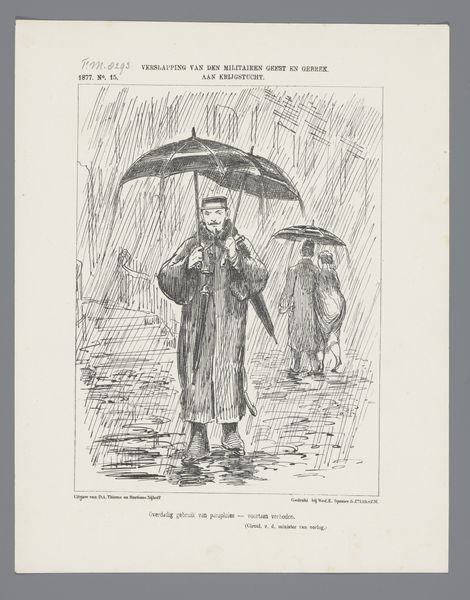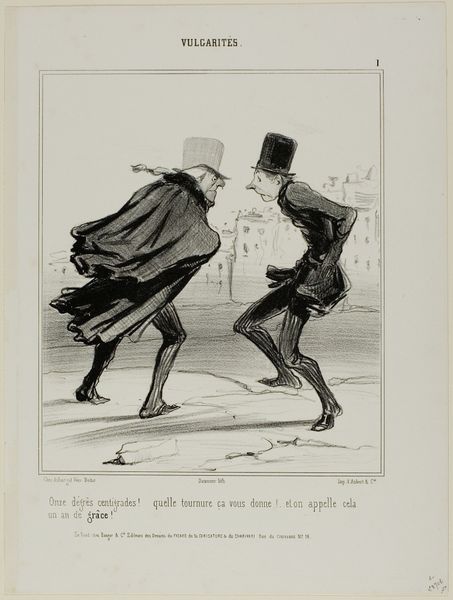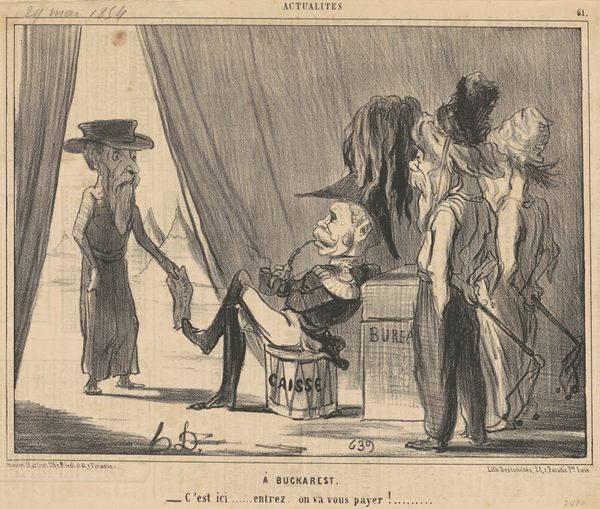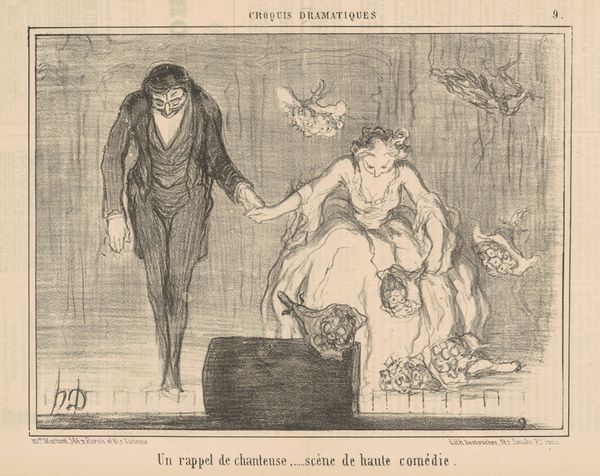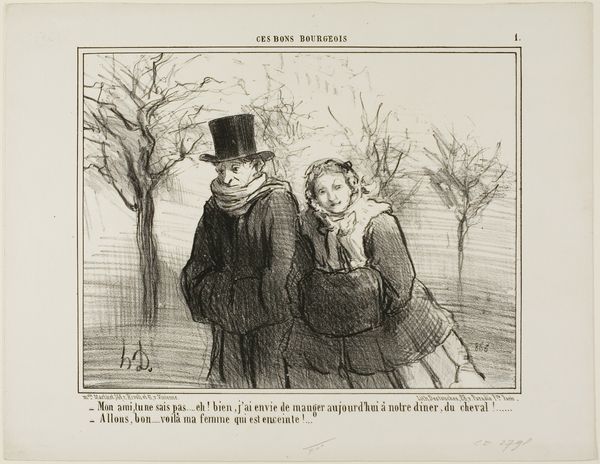
A country excursion during the beautiful month of May. “– Courage... Adelaïde it's just another league to go,” plate 308 from Actualités 1856
0:00
0:00
Dimensions: 192 × 249 mm (image); 279 × 356 mm (sheet)
Copyright: Public Domain
Editor: This lithograph by Honoré Daumier, titled "A country excursion during the beautiful month of May… ‘– Courage… Adelaïde it’s just another league to go,’ plate 308 from Actualités," was made in 1856. It looks pretty gloomy for a May excursion. I'm struck by how miserable the family seems amidst the downpour. What do you see in this piece, considering it was made during that time? Curator: Beyond the apparent depiction of a family enduring a rainy outing, I see a commentary on the social realities of 19th-century France. Daumier was known for his satirical work. Think about it: the title ironically contrasts with the grim scene. The well-dressed man, the bundled-up woman identified as “Adelaïde,” and the child trudge through the rain. Does this strike you as a truthful depiction or caricature? Editor: It definitely feels like a caricature. Their exaggerated features and posture suggest he's poking fun at them. Curator: Exactly. He uses caricature to critique the bourgeoisie and their aspirations. These “country excursions” were becoming fashionable, a way for the middle class to emulate the aristocracy, but Daumier highlights the uncomfortable reality of these attempts. It’s not just about the rain, it’s about the pretense and the often-unfulfilled promise of leisure and upward mobility. Consider the social commentary inherent in depicting a less-than-ideal "leisure" activity. Editor: So, it's less about the rain itself and more about what the rain represents? A disruption of their social climbing? Curator: Precisely. Daumier uses this single image to engage in a larger dialogue about class, aspiration, and the sometimes-painful realities hidden beneath the surface of bourgeois life. Editor: I didn't think about the class aspect before. Now I see it as a statement about social anxieties and the distance between aspirations and reality. Curator: And that's where art becomes a powerful tool for social critique, prompting us to question the narratives we are told about success and happiness. I learned something by elaborating with you today, too.
Comments
No comments
Be the first to comment and join the conversation on the ultimate creative platform.

